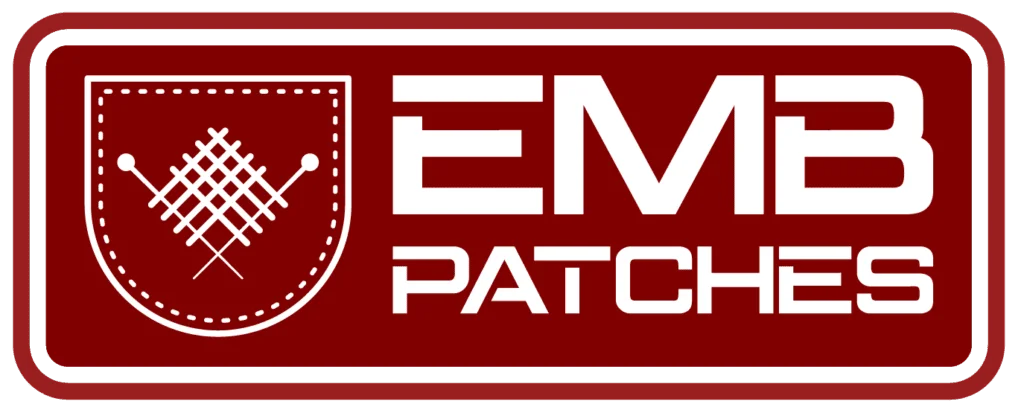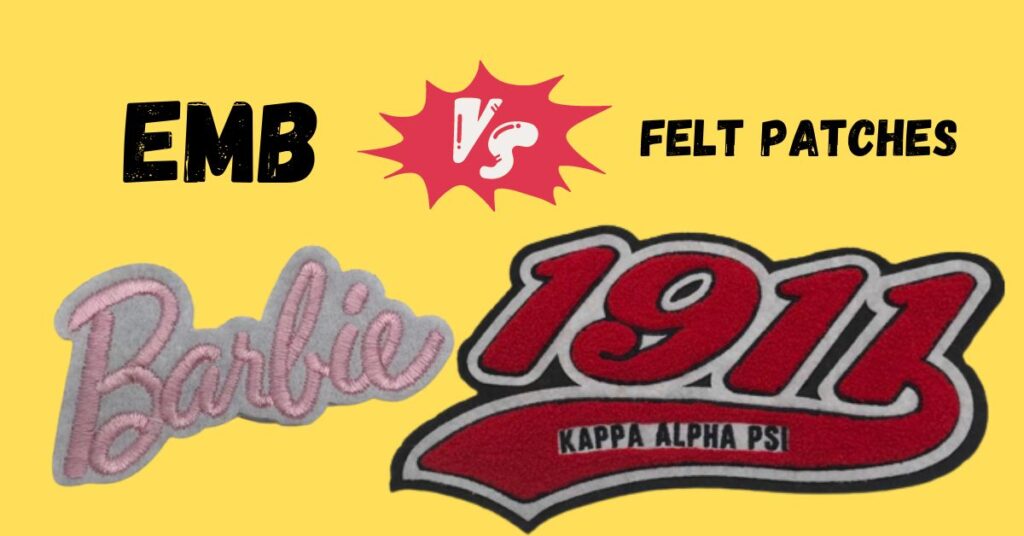Embroidered and felt patches are more common today than ever. Depending on the clothing a person wears, they have different features. This blog will mention some pros and cons so you can choose wisely.
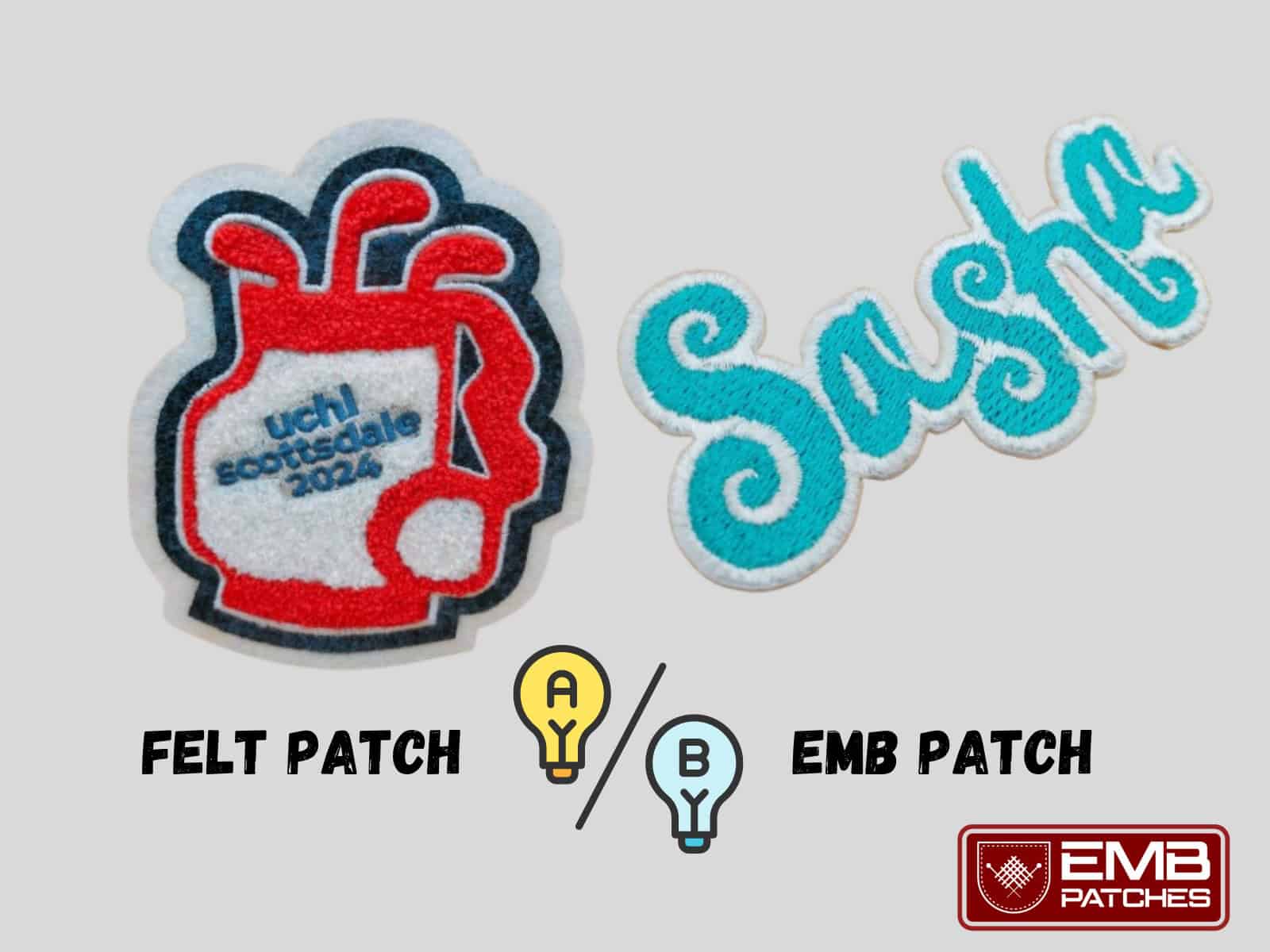
In this blog, we will compare both types mainly in two concepts:
- Objective
- Implementation/Execution
Key Features & Differences Between Felt & EMB Patch
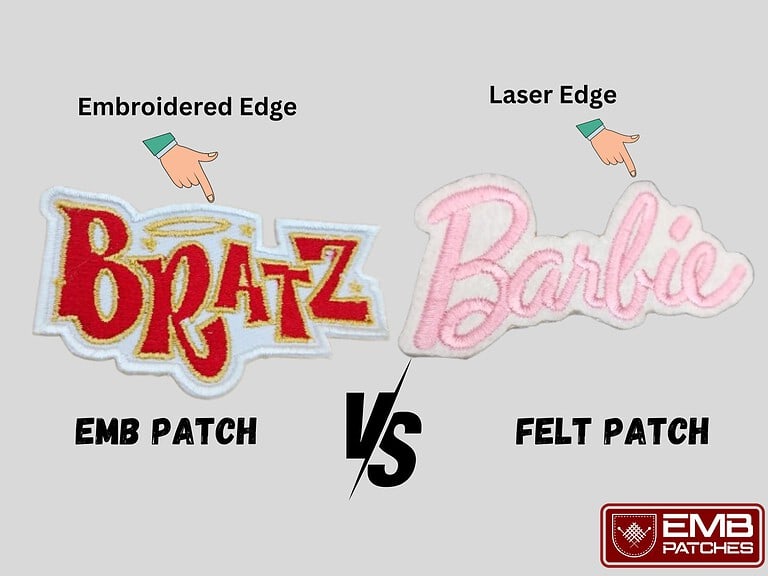
Let’s start by comparing both variants side by side, including placement, features, and backing.
Objective Comparison
#1 Thread: Embroidery patches use satin threads on the machine. They are mostly “Viscose.” Viscose is a premium-quality thread mainly used for export badges and monograms.
Vs
Felt patches use the same thread as regular patches, while acrylic yarn is used for chenille patches.
#2 Looks: Embroidery patches appear flat. However, they feel aroused when touched.
Vs
Felt patches feel the same unless yarn is embroidered over them.
#3 Backer: Embroidered patches use cotton twill as a backer under the machine.
Vs
As the name suggests, felt itself acts as a backer. It is a different kind of fabric, unknitted and made of synthetic fibers.
#4 Uses: Embroidery patches are the most used type of patch in the custom patch family. They can be used as company logos, brand names, text/fonts, and mascots.
Vs
Felt patches differ mainly when the felt is shown off behind embroidery or left with a 3–4mm border edge.
Execution Comparison
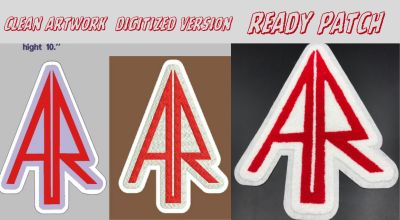
#1 Making: Embroidery patches use cotton twill as a base fabric with woven/unwoven fusing under it. Once the embroidery design is completed, the fabric is removed from the embroidery machine, applied with adhesive backing, and cut off using a soldering iron.
Vs
Felt is also used as the base fabric for a felt patch. After the stitches and adhesive backing are completed, the patch is laser cut using a CNC laser machine for sharp, attractive edges.
#2 Durability: Embroidery patches are less durable because their backer is made of cotton twill.
Vs
Felt patches can be more durable. They are made using natural fibers such as wool or animal fur. Alternatively, synthetic fibers, such as petroleum-based acrylic, can also be used for durability.
#3 Customization: Personalization is the hallmark of embroidery patches. It offers full control over designing anything in shape, style, and size.
Vs
Felt patches can also be customized; however, their design options might be more limited compared to embroidery patches.
STILL THIRSTY TO KNOW MORE?
Although we covered all the ingredient types and key differences, there might be more depending on the design/logo type. If you want to know what patch best suits your logo, connect with team EMB Patches. Our experienced designers and execution team would love to hear from you. We offer all tiny stuff related to custom embroidery patches with free-of-charge proofs, shipping, and handling across America.
